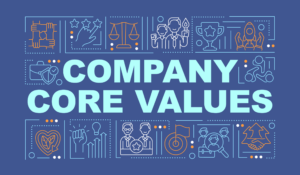Employee collaboration tools have become a key driving force behind productivity and efficiency in the workplace. With the right platforms, organizations can harness the power of collaboration to streamline workflows, foster teamwork, and enhance communication.
In this article, we will explore the importance of employee collaboration, the best tools available, strategies for implementation, measuring the impact, overcoming challenges, and future trends in this field.
Understanding the Importance of Employee Collaboration Tools
Collaboration among employees is crucial for the success of any organization. It encourages knowledge sharing, creativity, and problem-solving, paving the way for improved productivity and efficiency. When employees collaborate effectively, they can pool their diverse skills, ideas, and perspectives to achieve common goals.
Effective employee collaboration goes beyond simply working together. It involves building strong relationships, fostering a sense of trust and mutual respect, and creating an environment where everyone feels valued and heard. When employees feel comfortable collaborating with their peers, they are more likely to contribute their unique insights and ideas. Further, this leads to the creation of innovative solutions and improved workforce outcomes.
Collaboration also plays a significant role in employee engagement and satisfaction. When individuals have the opportunity to collaborate with others, they feel a sense of belonging and purpose. They are more likely to be motivated and invested in their work, leading to higher job satisfaction and lower turnover rates.
The Connection Between Collaboration and Productivity
Research has consistently shown a positive correlation between collaboration and productivity. When individuals work together towards a shared objective, they can accomplish tasks more efficiently. Collaborative environments create opportunities for brainstorming, feedback, and iterating on ideas, ultimately leading to better outcomes.
Collaboration fosters a sense of collective responsibility and accountability. When employees collaborate, they are more likely to hold each other accountable for their actions and deliverables. This shared responsibility creates a culture of high performance and ensures that everyone is working towards the same goals.
Furthermore, collaboration allows for the division of labor based on individual strengths and expertise. By leveraging the diverse skills and knowledge of team members, organizations can optimize their resources and ensure that tasks are assigned to the most qualified individuals. This not only enhances productivity but also promotes professional growth and development.
How Efficiency is Enhanced Through Collaboration
By leveraging employee collaboration tools, organizations can remove barriers to efficient work processes. Collaboration tools facilitate real-time communication, task assignment and tracking, and document sharing. They enable team members to work cohesively, eliminating time-consuming reworks and reducing duplication of efforts.
Collaboration tools also promote transparency and visibility. By providing a centralized platform for communication and project management, these tools ensure that everyone is on the same page and aware of the progress being made. This transparency reduces the risk of miscommunication and allows for timely decision-making.
Moreover, a team collaboration tool can foster a culture of continuous improvement. By capturing and documenting knowledge and best practices, organizations can create a knowledge-sharing ecosystem that enables employees to learn from each other’s experiences and avoid reinventing the wheel. This not only saves time but also promotes innovation and growth.
Employee collaboration is essential for organizations to thrive in today’s fast-paced and competitive business landscape. It not only enhances productivity and efficiency but also fosters employee engagement and satisfaction. By creating a culture of collaboration and leveraging the right tools, organizations can unlock the full potential of their workforce and achieve sustainable success.
Exploring Various Employee Collaboration Tools
Communication Tools for Better Teamwork
Effective communication lies at the heart of successful collaboration. Tools like HubEngage provide all communication channels like Mobile Apps, Web, Email, SMS, and Digital Signage, ensuring that organizations can reach and engage all employees. Such platforms offer chat features, discussion groups, and video conferencing capabilities, enabling seamless communication and fostering teamwork.
Mobile Apps as a Team Collaboration Tool:
- Flexibility: Access team communication and updates on the go, enabling remote and mobile team members to stay connected together.
- Real-Time Notifications: Receive instant alerts and updates, ensuring that team members are promptly informed about important developments.
- Collaboration on the Move: Facilitate collaboration regardless of location, promoting agility and responsiveness in a dynamic work environment.
- Time-Stamped Communication: Mobile apps often timestamp messages, providing a clear chronological record of communication and aiding in project tracking and accountability.
- Easy Integration: Mobile apps integrate seamlessly with existing systems, saving a lot of time and energy for app admins and IT teams.
Web-Based Employee Collaboration Tools:
- Accessibility: Enable team members to collaborate from any location on desktops, smartphones, and tablets with internet access. This fosters seamless communication and project management.
- Document Sharing: Facilitate easy sharing and editing of documents with dedicated discussion groups.
- Centralized Information Hub: Create a centralized hub for discussions and file sharing, promoting transparency, timeliness, and organization.
- Version Control: Facilitate version control for documents, ensuring that team members are working with the most up-to-date information and minimizing the risk of errors.
Email Campaign as a Team Collaboration Tool:
- Targeted Communication: Send personalized and targeted messages to specific groups or individuals.
- Controlled Access: Give or revoke access to files as per individual clearance levels.
- Analytics: Track email campaign performance metrics, allowing teams to refine strategies based on insights.
- Automation: Streamline the email campaign process, saving time and ensuring consistency in communication.
- A/B Testing: Conduct A/B testing on different elements of email campaigns to optimize content, subject lines, visuals, and CTAs for better engagement.
- Segmentation: Segment email lists based on various criteria, allowing for highly targeted and personalized communication tailored to specific audiences.
Text Messaging Tools:
- Instant Communication: Most useful for urgent matters.
- Mobile Accessibility: Reach team members who may not have constant access to web-based platforms.
- Conciseness: Encourage focused communication, promoting clarity and efficiency in team discussions.
- Read Receipts: Provide read receipts for text messages, offering senders confirmation that their messages have been received and read.
- Quick Polls: Conduct quick pulse polls or surveys, enabling teams to gather immediate and verified feedback.
Survey Team Collaboration Tools:
- Feedback Collection: Promotes a culture of continuous improvement.
- Data-Driven Decision-Making: Utilize survey data to inform strategic decisions. Enhances the effectiveness of strategic initiatives.
- Employee Engagement: Engage team members. Foster a sense of involvement and ownership.
- Anonymous Responses: Encouraging honesty and increased participation.
- Benchmarking: Benchmark team satisfaction over time. Identify trends and areas for improvement.
Internal Forms Tool:
- Data Collection: Use customizable forms. Ensure accuracy and consistency.
- Customization: Allows for versatile applications across different projects and tasks.
- Conditional Logic: Create dynamic and personalized user experiences based on respondents’ previous answers.
- Integration with Analytics Platforms: Gain deeper insights into user behavior and trends, enabling data-driven decision-making.
- Automated Reminders: Reduce the likelihood of missed deadlines and ensure timely submission of critical information.
- Data Encryption: Ensure the security of sensitive information with robust data encryption features.
Digital Signage as a Team Collaboration Tool:
- Real-Time Updates: Display critical information and updates in real time, ensuring that all team members across locations are on the same page.
- Visual Impact: Convey messages in a visually compelling way, enhancing engagement and information retention.
- Centralized Communication Hub: Transform physical spaces into centralized communication hubs, fostering a sense of unity and shared purpose among team members.
- Customizable Display: Customize the content displayed on digital signage to cater to specific team or project needs, ensuring relevance and impact.
- Emergency Notifications: Use digital signage for instant relay of emergency notifications or important announcements, enhancing workplace safety and awareness.
Overall, employee collaboration tools help teams collaborate from anywhere, anytime, on any device. Staff members have the flexibility to pick and choose the information they want to access or the initiatives they want to participate in. Teams can have real-time conversations, ask questions, and share ideas together, irrespective of their physical location or time zones. Team collaboration tools help resolve issues quickly and promote a sense of camaraderie among staff members.
Implementing Employee Collaboration Tools in the Workplace
Introducing collaboration tools in the workplace requires a systematic approach to maximize their benefits. By following a structured approach, organizations can effectively introduce collaboration tools and reap their full potential.
Steps to Introduce Your Team Collaboration Tool
- Note down the goals of collaboration for your organization. For instance, the primary goal for sales teams would be to share daily updates. Here a chat group can help. Whereas, the goal for a training team would be to minimize the time taken to train in-office and WFH teams. Here, the ideal collaboration tool could be a video-conferencing tool.
- Identify areas where team collaboration tools can make a significant impact. For example, if the organization struggles with remote team collaboration, tools that facilitate virtual meetings and document sharing can be highly beneficial.
- The next step is to pilot the selected tools with a small group of employees. This allows you to test the tools in a controlled environment and identify any potential issues or challenges.
- Feedback from the pilot group can help refine the implementation strategy and address any concerns before rolling out the tools to the entire organization.
- The final step is the rolling out the tool to the entire organization with proper training and support. It is essential to familiarize employees with the various features of the tools. This can include hands-on workshops, online tutorials, and user guides.
- Ongoing support mechanisms should also be established to address any user questions or concerns that may arise during the implementation phase.
Training Employees on Using Collaboration Tools
While collaboration tools may be intuitive, providing training sessions and resources is essential to ensure optimal use. Organizations should conduct training sessions to educate employees on the functionalities and benefits of the tools. These sessions can be conducted by internal trainers or external experts who specialize in collaboration tools.
In addition to training sessions, creating user guides and documentation can be highly beneficial. These resources can serve as a reference for employees to familiarize themselves with the various features and functionalities of the tools. User guides can include step-by-step instructions, tips, and best practices to help employees make the most out of the collaboration tools.
Furthermore, ongoing support and feedback mechanisms should be established to address any user questions or concerns. This can include a dedicated helpdesk or support team that employees can reach out to for assistance. Regular check-ins and feedback surveys can also be conducted to gather insights on how employees are utilizing the collaboration tools and identify areas for improvement.
Implementing collaboration tools in the workplace requires careful planning, assessment of needs, proper tool selection, piloting, and comprehensive training and support. By following these steps, organizations can successfully introduce team collaboration tools and grow more effectively and efficiently.
Measuring the Impact of Team Collaboration Tool on Productivity and Efficiency
To assess the effectiveness of your team collaboration tool, you need to establish Key Performance Indicators (KPIs) and evaluate their impact on productivity and efficiency.
Team collaboration tools offer a wide range of features, including real-time communication, file sharing, task management, and project tracking. However, it is essential for organizations to measure the impact of these tools to ensure that they are truly enhancing productivity and efficiency.
One of the KPIs that organizations can monitor is the number of active users.
By tracking the number of employees who actively use team collaboration tools, organizations can determine the level of adoption and engagement. A higher number of active users indicates that the tools are being embraced by the workforce, leading to increased collaboration and knowledge sharing.
Another important KPI to consider is the number of tasks completed using collaboration tools.
Task management features allow teams to assign and track tasks, set deadlines, and monitor progress. By monitoring the number of tasks completed through these tools, organizations can assess the efficiency and effectiveness of their collaboration processes.
Time saved through streamlined processes is another crucial KPI to evaluate.
Team collaboration tools can automate and simplify various tasks, such as document sharing and version control, reducing the time spent on manual and repetitive work. By quantifying the time saved, organizations can determine the impact of collaboration tools on overall productivity.
Customer satisfaction levels are also worth considering when evaluating the impact of collaboration tools.
These tools often facilitate better communication and collaboration with clients, resulting in improved customer service and satisfaction. By measuring customer satisfaction levels before and after implementing team collaboration tools, organizations can assess the effectiveness of these tools in enhancing customer relationships.
However, it is important to note that measuring the impact of employee collaboration tools goes beyond just tracking numbers. Organizations should also consider qualitative feedback from employees and stakeholders to gain a deeper understanding of the benefits and challenges associated with these tools.
Employee feedback regarding tool usability and satisfaction can provide valuable insights for further improvement.
Conducting surveys or interviews to gather feedback can help identify any usability issues or areas where the tools may fall short. This feedback can then be used to make necessary adjustments and enhancements to ensure that the employee collaboration tools meet the needs and expectations of the users.
Furthermore, organizations should regularly evaluate the success of collaboration tools implementation.
This evaluation should not be a one-time event but an ongoing process to continuously monitor and optimize the use of these tools. By regularly reviewing the impact of employee collaboration tools, organizations can identify areas for improvement and make informed decisions to enhance productivity and efficiency.
Measuring the impact of collaboration tools on productivity and efficiency requires organizations to establish key performance indicators and evaluate both quantitative and qualitative data. By tracking metrics such as active users, tasks completed, time saved, and customer satisfaction levels, organizations can gain a comprehensive understanding of the effectiveness of these tools. Additionally, seeking feedback from employees and stakeholders can provide valuable insights for further improvement and optimization. Regular evaluation and feedback are essential to ensure that employee collaboration tools are enhancing productivity and efficiency in the workplace.
Overcoming Challenges in Using Collaboration Tools
Implementing collaboration tools within an organization can be a transformative process. It can streamline communication, enhance productivity, and foster innovation. However, it is important to acknowledge that this transition may not always be smooth sailing. Organizations must be prepared to address and overcome the challenges that may arise along the way.
Resistance to Change:
One of the most common challenges faced when implementing employee collaboration tools is resistance to change. Employees may be accustomed to traditional methods of communication and collaboration, and may be hesitant to adopt new tools. This resistance can stem from fear of the unknown, concerns about job security, or simply a lack of understanding about the benefits that collaboration tools can bring.
The Resolution: Organizations should proactively communicate the advantages of these tools. By highlighting how team collaboration tools can streamline processes, improve efficiency, and enable remote work, organizations can alleviate fears and encourage buy-in from employees.
Lack of Training:
Lack of training is another common hurdle that organizations face across the hierarchy. Employee collaboration tools often come with a learning curve, and employees may not feel confident in using them effectively.
The Resolution: Organizations should invest in comprehensive training programs. These programs should not only cover the technical aspects of using the tools but also emphasize best practices for collaboration and communication. By equipping employees with the necessary skills and knowledge, organizations can ensure that they are able to fully leverage the potential of these tools.
Infrastructural Challenges:
Technical difficulties can also hinder the effective use of employee collaboration tools. Issues such as software glitches, compatibility problems, or slow internet connections can frustrate employees and impede their ability to collaborate seamlessly.
The Resolution: To mitigate these challenges, organizations should have a dedicated support system in place. This can include an IT helpdesk or a designated team that can quickly address technical issues and provide timely solutions. By providing reliable technical support, organizations can minimize disruptions and keep their collaboration efforts on track.
Strategies for Ensuring Effective Use of Collaboration Tools
- Establish guidelines and best practices for their use. These guidelines can outline expectations for communication, file sharing, and project management.
Helps: Promote consistency and ensure that everyone is on the same page. - Encourage open communication to maximize the benefits of employee collaboration tools. Organizations should foster an environment where employees feel comfortable sharing ideas, asking questions, and providing feedback through these tools.
Helps: Tap into the collective knowledge and creativity of their workforce, leading to better decision-making and problem-solving. - Defining responsibilities is crucial for effective collaboration.
Helps: Prevent confusion and ensures that tasks are assigned and completed efficiently. - Strive to create a collaborative culture. Collaboration tools are not just about technology; they are about fostering a mindset of teamwork and cooperation. Promote collaboration as a core value within the organization.
Helps: Encourages participation with the tools and fosters a collaborative spirit.
While challenges may arise when implementing and using team collaboration tools, organizations can overcome them by addressing common issues proactively and adopting strategies for effective use. By communicating the benefits, providing comprehensive training, and establishing guidelines and best practices, organizations can unlock the full potential of collaboration tools and reap the rewards of enhanced productivity and innovation.
Future Trends in Employee Collaboration Tools
Emerging Technologies
Technologies like artificial intelligence (AI), machine learning, and virtual reality (VR) are set to revolutionize employee collaboration tools. These advancements will enable more intelligent workflows, automated processes, and immersive team experiences.
Imagine a future where AI-powered collaboration tools can analyze data, identify patterns, and provide valuable insights to teams. With machine learning algorithms, these tools can learn from past interactions and suggest the most effective ways to collaborate. Virtual reality, on the other hand, can create virtual meeting spaces where team members can come together from different locations and feel as if they are in the same room.
These emerging technologies have the potential to transform the way teams collaborate, making it more efficient, productive, and engaging.
The Future of Work: Team Collaboration Tools and Beyond
Looking ahead, employee collaboration tools will become even more integrated into the fabric of work. They will seamlessly integrate with other workplace systems, facilitate cross-functional collaboration, and cater to the needs of remote and mobile workforce.
Imagine a future where employee collaboration tools are seamlessly integrated with project management software, allowing teams to easily track progress, assign tasks, and collaborate in real-time. These tools will also enable cross-functional collaboration, breaking down silos and fostering a culture of teamwork across departments.
With the rise of remote and mobile work, collaboration tools will play a crucial role in keeping teams connected and productive. They will provide secure and efficient communication channels, allowing remote workers to collaborate seamlessly with their colleagues. Mobile-friendly interfaces will enable employees to access collaboration tools on the go, ensuring productivity even outside the traditional office environment.
Overall, employee collaboration tools are indispensable for boosting productivity and efficiency in today’s organizations. Choosing the right tools, like HubEngage, is crucial to harnessing the full potential of collaboration. With its comprehensive communication channels, HubEngage ensures seamless reach and engagement with all employees. By embracing team collaboration tools and implementing them effectively, organizations can create a culture of collaboration that empowers their workforce and drives success.
The future of employee collaboration tools is exciting and promising. With emerging technologies and a focus on integration and mobility, these tools will continue to evolve and transform the way teams work together. Organizations that embrace these trends and invest in the right tools will have a competitive advantage in the ever-changing business landscape.
Ready to elevate your organization’s productivity and efficiency through superior collaboration?
Discover the HubEngage Difference
Experience the power of HubEngage, the all-in-one employee app and team collaboration tool designed to transform your internal communications, employee engagement, staff recognition and beyond. With our custom branded employee apps, personalized content delivery, and comprehensive automation, HubEngage is tailored to meet the unique needs of your workforce. Embrace a world of possibilities with multi-language support, gamification, and exceptional customer service.
Don’t just take our word for it—see a demo today and witness firsthand how HubEngage can streamline your operations and boost your bottom line.












